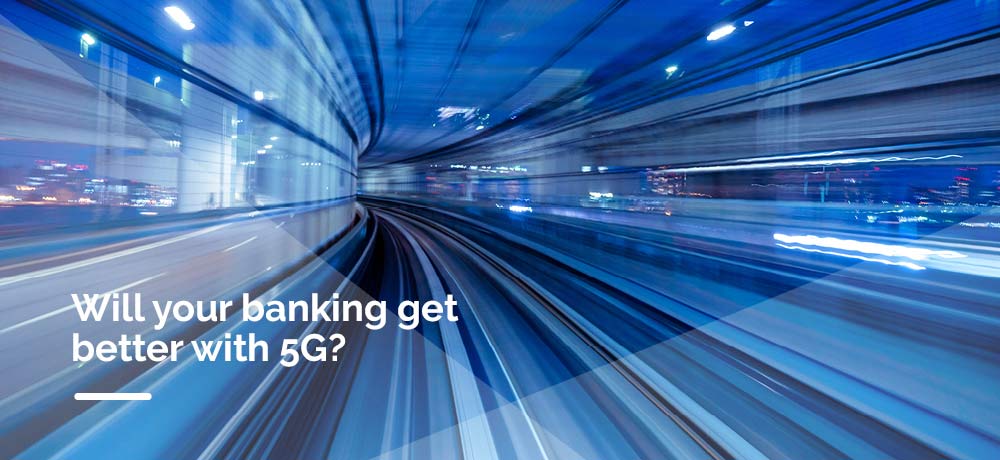Fintech Insights
What Will 5G Mean for Banks?
Andrew Beatty | SVP and General Manager, Next Generation Banking, FIS
October 14, 2019

It may be a few more years until 5G wireless technology becomes truly ubiquitous, but when it does, 5G will redefine our expectations for “normal” with all things wireless – including banking. We’ll soon expect a lightning quick, lag-free mobile experience, with uber-fast response times (5G will have sub-one millisecond latency) and easy connections to any number of devices, well beyond a speaker, headphones or a heart rate monitor. PC Mag even predicts that 5G ubiquity could enable smart roads and cars where essentially anything on the road can communicate with the other things around it.
Here are a few ways banks can embrace the opportunities that 5G can bring to their processes, products and customers.
Next Generation Customer Service. 5G capabilities will raise the bar for hyper-personalized and immediate customer service and will demand that banks have strategies in place to instantly resolve issues in all channels the customer uses. Artificial Intelligence (AI) and Virtual Reality (VR) will likely become “table stakes” for the customer offering.
Security and Fraud Detection. With 5G, banks can add and update security enhancements in real-time, without consumer intervention, for non-disruptive rollouts. The arrival of 5G will also enable increased use of multimodal biometric security measures that combine nuances like the customer’s gait and the position in which he or she holds their mobile phone to validate the mobile user’s identity.
Because 5G allows vastly more data to travel across networks in real-time, it can greatly enhance proactive fraud prevention. Banking technology can instantaneously comb through data like geolocation, transaction amount, and the merchant ID to reduce fraud detection errors and false positives.
Mobile Experience. Latency will be reduced to under one millisecond with 5G for a true real-time mobile banking user experience. We’ll likely see new mobile banking use cases emerge, like the ability to scan an image of an item in a catalog, brick and mortar store, or on a website for instant purchase. Analysts predict that “standard banking operations” such as payments will also extend to new channels like 5G smartphones, wearables, Internet of Things (IoT) devices and virtual reality.
Faster payments and decreased latency will make mobile and digital payments even more appealing and should boost usage far beyond what we see today. This shift will demand strategies that keep cards at the top of the mobile device—which will expand to phones and wearables, connected vehicles and the like.
Streamlined Lending and Big-Ticket Purchases. 5G offers the potential to finally streamline cumbersome processes that often accompany big-ticket purchases — from application to credit check to personalized financing offer to approval and funds availability in one slick, end-to-end experience. Banks that invest in tools to combine artificial intelligence, data and 5G will be able to run many parallel processes in real time. In turn, we expect improvements to the speed and accuracy behind lending decisions, and the ability to optimize lending rates to match each unique applicant’s reality.